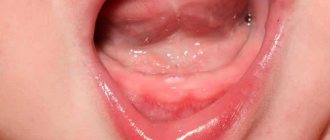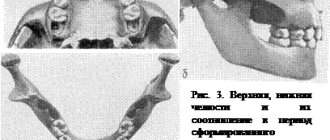A purulent formation on the gum is popularly called gumboil. Very often it is not taken seriously, but it is not just a small swelling that will go away on its own. Flux is an ontogenic periostitis, a complex infectious disease that affects the periosteum and jaw bone. Periostitis occurs quite often, but without adequate treatment it is fraught with serious complications, including blood poisoning.
It is almost impossible to cure gumboil without the help of a dentist. The treatment program includes therapeutic, physiotherapeutic, and surgical methods.
Have you noticed purulent formations on your gums and swelling of your cheeks? Do you have acute pain in your tooth or gum? Come for a consultation with a dentist at our clinic. Timely treatment of flux allows you to get rid of the problem within about 7 days.
Why does flux form?
Dental diseases are always the precursor to gumboil. Most often lead to suppuration:
- Untreated caries. If caries is not treated, the inflammatory process begins to spread to other tissues. Pulpitis and periodontitis gradually develop.
- Mechanical injury. Injury can lead to more than just crown destruction. Very often, an inflammatory process develops in injured tooth or gum tissues. Without treatment, purulent processes develop and gumboil forms.
- Periodontitis. In more than half of the cases, gumboil develops precisely against the background of periodontitis, as its complication. This is due to the fact that purulent processes from periodontal pockets can spread to the neck of the tooth.
- Poorly sealed canals. Before filling, the canals must be completely cleaned and the filling material must completely fill the cavity. If at least one of the conditions is violated, the infection from the canal spreads to other tissues.
Associated symptoms
In addition to changes in soft tissue color, patients usually experience associated symptoms. Most often these are swollen gums and soreness, but if the cause is banal staining with food pigments, there will be no other pathological manifestations. As for inflammatory diseases that lead to the appearance of blue spots on the mucous membrane, patients also complain of the following symptoms:
- pain, which is especially acute when chewing food,
- increase in body temperature,
- itching,
- swelling of soft tissues,
- bleeding
Bleeding can be a concomitant symptom.
When the cause of the problem is incorrect installation of the orthopedic structure, numbness of the mucous membrane is often noted, as well as discomfort even at rest.
When do you need dental help?
Flux has pronounced symptoms. The main one is the appearance of an abscess on the gum next to the diseased tooth. The abscess develops gradually. At first, the gums swell a little and a small red or whitish bump is noticeable on it. After some time, a noticeable fistulous tract forms on the lump, from which pus flows. The development of periostitis is accompanied by other symptoms:
- Swelling and swelling of the gums, lips, cheeks. Sometimes they can be so large that facial features are distorted.
- Severe cutting pain in the tooth area. Innervates the temporal region, orbits.
- The diseased tooth begins to become very loose, even if there was no mobility before or it was insignificant.
Since flux is caused by infection, it is characterized by symptoms that appear during any infectious process. The patient feels unwell, his temperature rises, his head hurts, and weakness appears. Lymph nodes on the head and neck become enlarged.
Any of these symptoms is a reason to consult a doctor. The more advanced the case, the higher the risk of complications. This disease is often accompanied by other pathological processes. For example, a cyst may form in tissues affected by infection.
Complications arising after tooth extraction
After the surgeon removes the problematic tooth, slight bleeding from the wound may occur. Normally, the gums stop bleeding after a few minutes. A blood clot should form at the site of the pulled out tooth.
In the postoperative period, when the effect of anesthesia wears off, swelling and inflammation appear due to a violation of tissue integrity, and the temperature may rise slightly. The person begins to feel how the wound hurts. All unpleasant symptoms normally disappear within 2-3 days. If the patient’s well-being does not improve during this period, then it is necessary to find out the cause of this condition; perhaps we are talking about complications.
Local
The most common local complications after tooth extraction surgery include:
- Bleeding. Local causes often arise due to severe inflammation of the tissues surrounding the hole, and even neighboring teeth hurt. Not only soft tissues, but also the bone of the socket can bleed (see the photo for what it looks like). In the first case, bleeding is eliminated by suturing the gum; in the second case, the hole is tamponed with iodoform turunda for several days.
- Fracture of the tooth being removed. Due to severe tooth decay at the time of its removal, a piece may break off. If the specialist is unable to remove all the fragments, then the patient is sent for an X-ray examination, after which the doctor finally removes the remaining part of the tooth.
- Alveolitis. This complication causes bad breath. Inflammation leads to increased temperature and enlarged lymph nodes. When you press on the gum, pus is released (we recommend reading: how and with what to remove pus that has formed in the gum?). Alveolitis develops 2-4 days after removal. Its treatment takes from 10 to 40 days. Inflammation is accompanied by severe pain, which sometimes even analgesics do not relieve. According to statistics, this complication develops in 3-5% of cases, but when a wisdom tooth is removed, this figure increases to 30%.
- Dry socket (we recommend reading: symptoms of a dry socket after tooth extraction and treatment with photos). If there is no blood clot in the socket, bad breath appears. The patient feels pain and discomfort in the mouth. This condition requires medical treatment, as suppuration may occur.
- Perforation of the maxillary sinus. Inflammation of the root apex near the bottom of the sinus often leads to destruction of the bone plate. Due to tooth extraction, a gap appears between the oral cavity and the maxillary sinus. The patient may notice that liquid enters the nose while eating.
- Hematoma after tooth extraction (see also: what to do if the gums turn white after tooth extraction?). During surgery, there is a high risk of vascular damage. The blood leaking from them penetrates the soft tissues. Depending on the size of the hematoma, the patient experiences pain of varying intensity. This condition may be accompanied by fever and discharge of pus. The hematoma will resolve on its own in a few days.
- Stomatitis. This disease is caused by pathogenic microorganisms that can be introduced into the wound during surgery.
- Fractures and dislocation of the jaw (we recommend reading: How long does it take for a broken jaw to heal?). Such severe consequences are extremely rare, usually after the removal of a wisdom tooth.
- Paresthesia. It is characterized by numbness of the cheeks, tongue or chin (we recommend reading: what to do if the numbness of the tongue does not go away after anesthesia?). When extracting a wise tooth, its roots may touch the nerve endings.
Flux treatment methods
Treatment should be started as early as possible. If an abscess on the gum opens spontaneously, there is a risk of infection entering the bloodstream. With such an infection, blood poisoning develops, and such a complication can lead to serious consequences, including the death of the patient.
Flux treatment is always complex. The treatment program depends on the degree of tooth decay and the spread of infection.
Dentistry for those who love to smile
+7
Make an appointment
Bruises and hematomas are normal manifestations of the postoperative period
Early complications can occur as early as the first day of implantation. The degree of symptom manifestation depends on many factors: the degree of tissue damage, the duration of the operation, and the experience of the doctor. In the first hours after implantation of the artificial root, the tumor increases in size and painful sensations appear. Hematoma and bruises disappear within 5-7 days , provided the healing process proceeds normally. The peak development of complications is 3-4 days after surgery .
Surgeon's opinion : “Complications after implantation due to the fault of the doctor are becoming less and less common, thanks to the use of high-tech equipment and high-quality drugs. According to statistics, most pathologies associated with the installation of a titanium root develop due to the fault of the patient himself. The reason for this is neglect of oral hygiene and failure to follow specialist instructions. It is very important to follow simple recommendations to ensure effective implantation results.”
Opening an abscess on the gum
The abscess is always opened. This reduces the risk of spontaneous opening, which can cause complications. The flux is opened under local anesthesia. If the patient has panic or other indications, the doctor may choose a different method of anesthesia.
A small incision is made on the anesthetized gum in the area of the gumboil, no more than 2 cm in length. After the dissection, the doctor completely cleans and sterilizes the purulent cavity and treats it with antiseptics. A crust should not be allowed to form in the area of the incision, as it will interfere with the outflow of ichor and purulent contents. To do this, a drainage is inserted into the incision. After the cavity is cleared of pus, you can begin general treatment, the purpose of which is to eliminate the causes that caused periostitis.
How to avoid complications
To avoid missing a cyst in the early stages, check with your dentist at least once every six months, especially if your child has chronic pulpitis or periodontitis. The occurrence of cysts is most likely between the ages of 6 and 12 years, especially during the formation of the first molars in the lower jaw.
Teach your child proper and regular oral hygiene. This will reduce the likelihood of inflammation and caries in both milk and permanent teeth. For this, use high-quality children's toothpaste for a specific age. Asepta has developed Baby, Kids and Teens pastes that take into account the dental needs of children of different ages. For the little ones, specialized Asepta wet wipes designed in the form of finger pads are suitable - wipe the gums after each feeding.
It is necessary to treat infections and caries in a timely manner so that they do not lead to the formation of a cyst in the future.
General treatment
Methods depend on the reasons that caused the flux. The only exception is periostitis, which develops against the background of periodontitis. In this case, immediately after opening the abscess, the doctor begins periodontal treatment. No medical manipulations with the tooth are required. In other cases of dental disease you need to treat:
- Pulpitis. First, the dentist drills out carious cavities and performs pulp removal. After this, endodontic canal treatment is performed.
- Periodontitis. Treatment depends on whether depulpation and canal filling have been previously performed. If periodontitis has developed for the first time, the doctor will remove the pulp, clean and fill the canals. If filling of the canals has already been performed previously, they need to be unfilled and treated again. Since it is very important that the pus comes out of the flux completely, when treating complicated pulpitis and periodontitis, a temporary filling is not placed.
- Tooth after restoration. At the first stage, the doctor is faced with the task of completely removing inflammation. After this, the damaged tissue of the root apex is removed. If the condition of the root allows, the tooth is restored again using a core tab or pin and an artificial crown. When the damage is very severe, it is more advisable to remove the tooth.
What can you do as an emergency?
It was already mentioned above that the most common cause of symptoms in childhood is the process of teething or changing teeth. To help your baby endure this difficult and painful period more easily, special ointments and gels with an anesthetic effect will help: “Kalgel” or, for example, “Cholisal”. As a rule, such a problem does not require medical intervention - the process of “punching” the tooth out usually takes several days. To speed up this process, you can resort to the help of special baby teethers. The blue spots will gradually resolve on their own.
If the cause of the blue discoloration is a growing tooth, then the symptoms may resolve on their own
As for other causes of hematoma, including in adults, you cannot do without the help of a doctor. During a visual examination and examination of the clinical picture as a whole, the specialist will determine whether the symptom is a consequence of a disease of the oral tissues, a pathology of the body, or an incorrectly fixed crown. Only after this the doctor will be able to begin treatment. If the problem is gingivitis or stomatitis, then the patient will be prescribed a course of appropriate anti-inflammatory and antibacterial drugs - both for oral administration and for external treatment of the affected areas.
If the problem is the result of an incorrectly installed crown or prosthesis, you will have to completely remove the orthopedic device and undergo anti-inflammatory therapy. The prosthetic device is sent for correction or completely replaced with a new design, which is certainly the best option. When a bruise becomes the result of mistakes made by the doctor during filling, a temporary filling is applied and a course of anti-inflammatory drugs is also prescribed.
Physiotherapy
Physiotherapeutic methods are used as additional ones. They allow you to quickly cope with the infection and stop the inflammatory process. The following methods can achieve good results:
- Fluctuarization. The inflamed tissues are exposed to low voltage current.
- Electrophoresis with lidase. Electrical current is applied to the tissue, allowing the drug to be effectively distributed.
- Ultrahigh frequency therapy. The method is based on the influence of an electromagnetic field.
- Ultrasound therapy. The effect of ultrasound on infected tissues accelerates their regeneration.
- Laser therapy. Damaged tooth tissue is treated with a laser beam.
Rinse
They are used as an additional treatment in order to completely remove pus and ichor from an opened abscess and prevent the infection from spreading to healthy areas. Soda-salt baths and rinsing with antiseptic solutions help make treatment more effective and speed up gum healing. When rinsing, you must adhere to the following rules:
- During the day, do 4-5 gentle rinses or baths. To do this, just take the solution into your mouth and hold it for about 30 seconds.
- During the day, do 4-5 gentle rinses or baths. To do this, just take the solution into your mouth and hold it for about 30 seconds.








